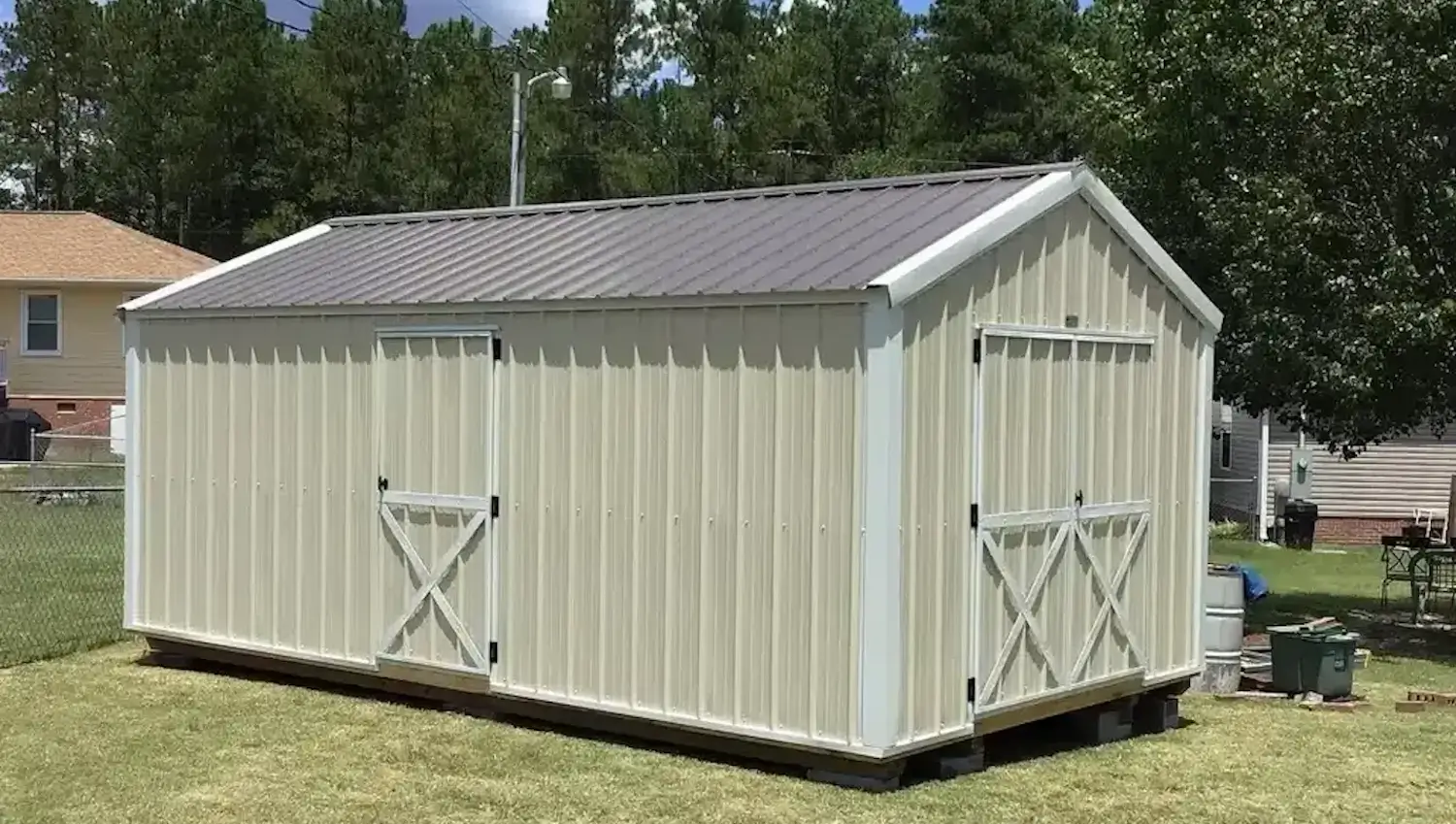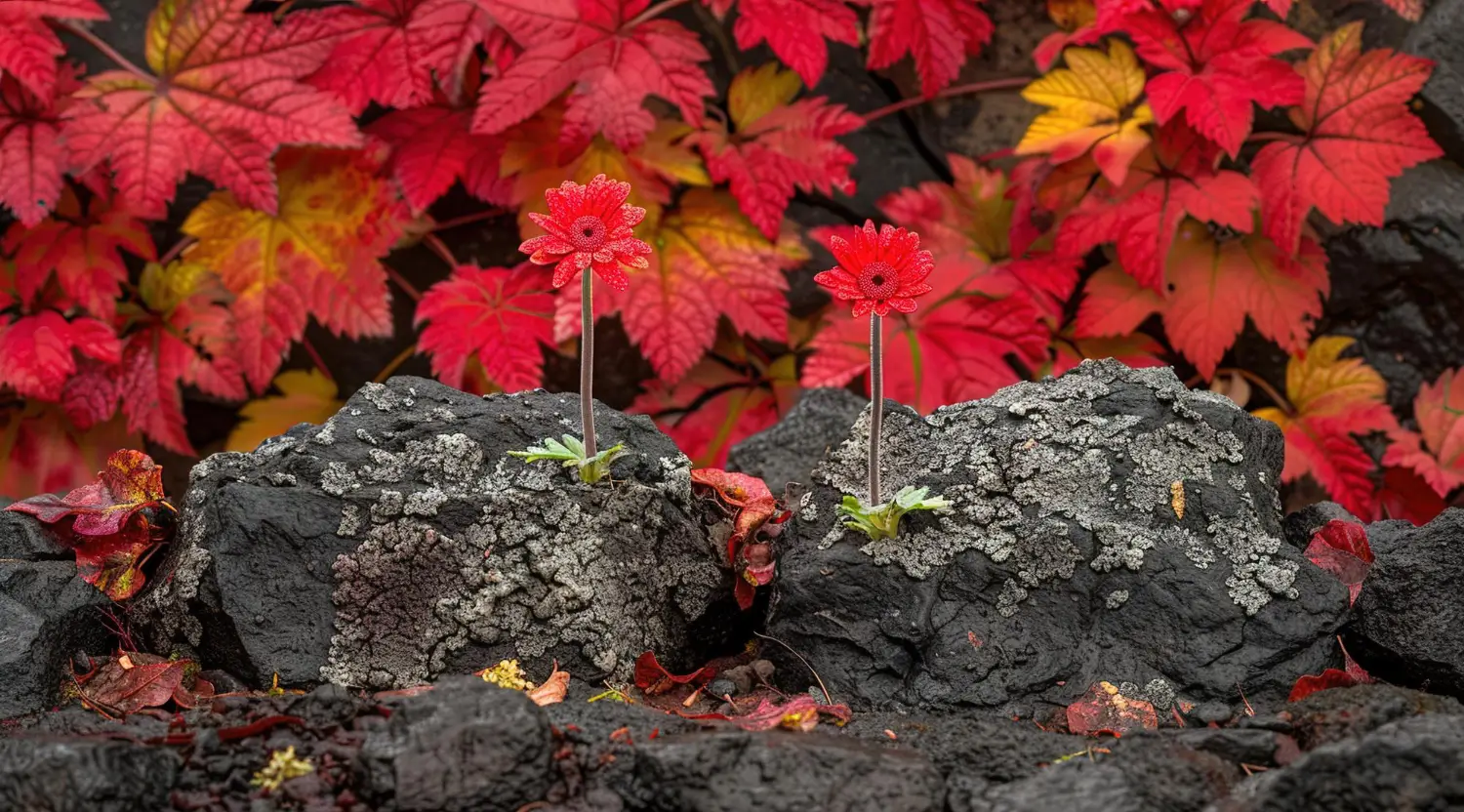
August 24, 2025

In landscaping, materials such as sand, mulch, and gravel can help the soil structure and drainage. However, they often cause poor air circulation, pest problems, low nutrients, and reduced moisture, which can harm plant growth. When it comes to maintaining soil texture while boosting aeration and water drainage over time, lava rocks are ideal.
Lava stones are porous, lightweight, and come in many different shapes and colors, such as solid black or red/black/brown/gray. The more rustic way they look makes a uniform clump of stems serve as an excellent plant to create color, texture, and beauty in a garden. They are also used for ornamental rocks in gardens and for construction, including building facades.
The porous nature of lava rocks makes them the perfect way for your indoor plants to grow, because you want a material that is stable enough to hold up your plants but allows air to get down so the roots will pick up more air too, and doesn’t move around. Growycle has a variety of rock plants and equipment for garden ornamentation.
Lava rocks are produced from volcanic and natural activity, similar to igneous rocks. They are created when molten lava, or magma, erupts from a volcano and cools down on the Earth’s surface or in water. When the lava cools rapidly, it solidifies into a heavy, hard rock; this is known as volcanic rock. The rocks have been sculpted by Earth's geologic processes for millions of years.
Lava rocks have been used for landscaping, gardening, and in construction. Their moisture retention and soil aeration properties can make them useful in agriculture and horticulture. Moreover, their nice outlooks have been used for decorative patterns as garden or interior decoration.
Lava rocks have special features that make them ideal for gardening. Here are a few of them:
Nature: It is a natural, porous rock that neither reacts chemically nor supports biological activity. It has no impact on the nutrients in soil, but it does have many benefits for plants.
Lava rocks help improve plant health because of their unique benefits. Here are a few of those benefits.
Heat Retention: Lave rocks can store heat during the day and radiate it long into the night. This is very helpful for plants that like it warm, or when you're in an environment with a fluctuating temperature.
Volcanic lava rocks come in different types, each with unique characteristics. Here are the main types of volcanic lava rocks:
| Names | Color | Weight | Key Features | Uses |
|---|---|---|---|---|
| Red Lava Rock | Medium red to a deep burgundy | Lightweight with a density of 1,300–1,500 pounds per cubic yard. | Absorbs water, chemically inert and stable | Ground cover, border for pathways, in aquarium |
| Black Lava Rock | Deep charcoal to Jet black | Lightweight up to 1Kg | Environment-friendly, unique texture | Landscaping, kitchen gardening, aquarium designing |
| Obsidian | Black, green, brown, and rarely orange, yellow, red, or blue | From a few ounces to several pounds | Volcanic glass appearance, a little hardened than window glass | Uses in making mirrors, weapons, tools such as sharp knives and scalpel blades |
| Rhyolite | Light Gray, Pinkish, or tan | Lightweight with a density of 2.35 - 2.70 | Quartz and feldspar crystals, highly viscous | Construction, decoration, jewelry, sharp tools |
| Basalt | Dark grey to black | Usually around 3.011 grams per cubic centimeter | Low amounts of lighter-colored silicate minerals and porphyritic structures with larger crystals | Soil amendment, drainage, constructions such as roads, acid resistance, and rock wool |
| Pumice | Creamy white to light brown | Very lightweight with 0.25 - 0.65 g/cm³ | Sponge-like appearance, floats on water | Horticulture, water filtration, cleaning, construction, and beauty industry |
Here are some things that gardeners must consider when selecting lava rocks for gardening.
Medium-sized lava stones (1/2" to 1") are perfect for gardening. They are tough for good drainage and do not compact, so they can be used for plants like succulents or cacti that require good-draining soil.
Lava rock comes in different hues, and so gardeners must use it wisely:
Select lava rock that is clean of dust and debris. Also, examine the texture of these rocks before choosing them for gardening. You also need to make sure that they are not lacking in skid.
If mulch application is a priority, gardeners need to choose the size wisely:
You will, of course, need to take into consideration the plant that you would like to grow on lava rocks, as different plants may require a variety of rock sizes. Plants with tiny shoots are most suitable for these types of rocks.
Lava rocks are highly effective in improving garden drainage due to their porous nature. These rocks have numerous small holes or pores within them, which allow water to flow freely through the rock, preventing it from pooling in the soil. The spaces between the rocks also help air circulate within the soil, promoting healthy root growth and preventing water from becoming stagnant.
Using lava rocks in raised garden beds is an excellent way to improve drainage, especially in areas prone to heavy rainfall or where soil compaction is an issue. Here's a step-by-step guide:
Planting: Plant vegetables, flowers, or shrubs as usual, knowing that the lava rocks will improve the drainage beneath them.
Filling pots and containers with lava rocks is a good way to prevent waterlogging, particularly in those plants that need well–draining soil. Here’s how to do so, with lava rocks:
Control Watering: Volcanic rocks aid in keeping water at the bottom of the pot. But the rocks don’t prevent water from leaving, so gardeners must be sure not to overwater their plants.
Lava rocks are versatile and durable, and they can be used for various landscaping features. Here are some common ways to decorate landscapes or gardens with lava rocks.
Container Gardens can be placed on top of pots to improve drainage and prevent waterlogging. They also add texture and color for aesthetic appeal.
Lava rocks are generally low-maintenance, and they can be used for several years. Here’s how to maintain them with a minimum of work:
Lava rocks may accumulate dirt, dust, or algae over time, especially when used around plants or water elements. Rinse off the dirt with a garden hose to clean them. For heavy stains or algae, brush lightly or use a low-power washer.
Clean the rocks with a damp cloth to remove dust, ready for indoor pots or decorative creations. Take an even warmer, soapy bath by soaking it in warm, soapy water for half an hour, then rinsing well for a deeper clean.
Though the lava rocks suppress weeds, you may still have some growing through them. So as not to disturb the rocks, pull by hand or use a weed puller. Installing a weed barrier fabric beneath the rocks also reduces weeds.
Lava rocks are sturdy but can move around over time, as with a garden bed or walkway. If the rock has settled, make sure to add more on top to maintain your preferred look and depth. If the rocks start to get skewed out of position, especially in walkways or as borders, gently nudge them back into place for a uniform appearance.
If lava rocks are used as borders or edging, consider using materials like plastic, metal, or stone to hold them in place. Wind, rain, or foot traffic can cause them to shift. Placing landscape fabric beneath the rocks helps prevent them from mixing with the soil and keeps them stable. Check periodically to ensure the fabric is intact.
If you see algae or mold on your lava rocks (particularly if they are near water), clean them with a vinegar-water solution (1 part vinegar to 3 parts water). Scrub with a brush and rinse well. For tough stains, soak the rocks in mild, soapy water and rinse them well. You don’t want to use harsh chemicals on it because they will harm the rocks and can impact the plants.
Lava rock is a special lightweight rock with a natural-grained texture in more than a few colors. It is an extremely low-maintenance rock option that helps to moderate temperature and improve soil drainage by retaining moisture. When cared for properly, lava rocks are tough and can last a long time. Photo: Growycle gives gardeners several tips to improve their garden drainage and landscaping.
Disclaimer: This material is for informational purposes only and should not be relied on for legal, medical, financial, or any other form of any professional advice.
Lava rocks contain minerals like iron and magnesium, which can slightly alter the soil's pH level, making it more alkaline. Hence, gardeners must monitor the soil pH level for effective plant growth.
Yes, individuals can use lava rocks in potted plants, especially as a drainage layer at the bottom of containers. These rocks help prevent excessive water flow and root rot, promoting healthy plant growth.
No, lava rocks do not attract pests. Because they are chemical-free and organic, they can be used to deter pests.